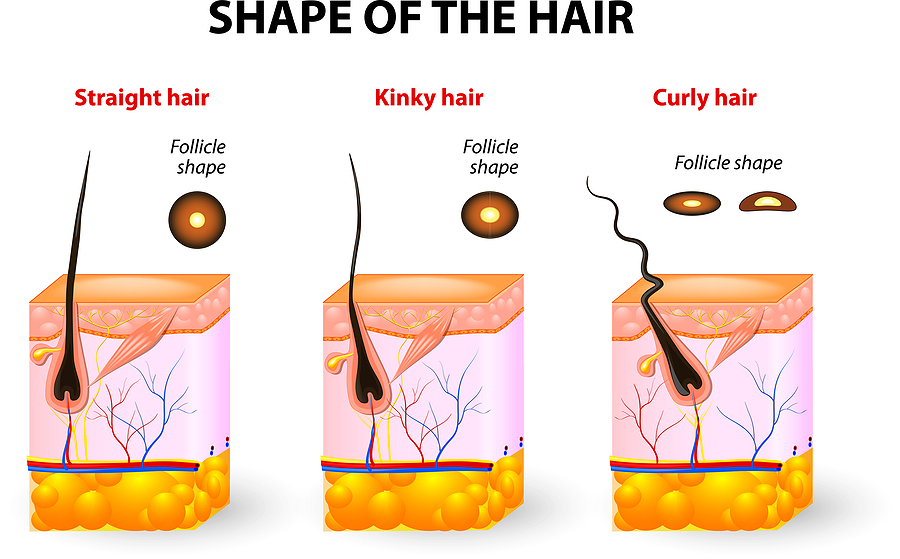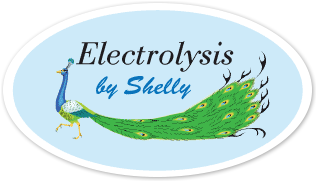
The Hair Pathway: More Complex than You Think
There are different types of hair growth within a follicle pathway. Your electrologist will determine you may have one or more during electrolysis treatments.
Lanugo Hair (Pre-Natal Hair)
Lanugo Hair is very fine, soft, unpigmented hair and is only found on unborn babies. This hair is shed by the fetus in the seventh- or eighth month during pregnancy.
Vellus Hair (Peach Fuzz)
Vellus hair is very much downy, soft and has no pigment. It is usually all over the body. It looks mostly like white fuzz. It rarely grows longer than two centimetres. This hair does not have a medulla and the root is close to the surface of the skin.
‘Tombstone’ Hairs
Tombstone hairs from a follicle previously treated in the growing (anagen) stage of growth which remain in the skin as the electrologist will have removed a hair from the follicle when in the resting (telogen) stage, unaware that a new anagen hair was forming underneath. These hairs are thick, very dark, brittle, and look like a foreign body at the surface of the skin. They can be removed by exfoliation of the skin or by tweezing.
Distorted Hair
Distorted hair is a result of twisted or contorted configuration of the hair follicles in the skin. Each time a hair is plucked, waxed, tweezed, or threaded; it causes trauma to the base of the hair. This causes the follicle to distort and results in ingrown hairs.
Ingrown Hairs
Ingrown hairs can be identified by small bumps on the skin, inflammation, and erythema. Sometimes the hair can be visible under the skin. Causes of ingrown hairs are understood to be rubbing and chafing, irritation, and dry skin. A sterile needle can be used to release the hair from under the skin. However, the hair should be left alone if the skin is inflamed and infected until the skin has healed, prior to electrolysis treatment. This will allow the pathway from the ingrown hair to heal and ensures it doesn’t grow back.
Compound Hairs
Compound Hairs are also known as ‘Pili Multigemini’ hairs and occur where the follicle has two or more dermal papilla, which results in two or more hairs growing from the same follicle. The electrologist will identify the most conspicuous hair and treat with an electrolysis current – this may affect both hairs. The first hair will be removed and then see if the second hair will be removed without traction. If not, the second hair will be treated with slightly reduced intensity and time.
Curved Hairs
The growth cycle of a curved hair is the same as for a straight hair. Curved or oval follicles can be found in Caucasian skin, but predominantly occur in Black skin. In most cases, the lower quarter of the curved follicle turns at an obtuse (greater than 90°) angle from the follicle, which causes a flattening of the hair structure. This flattened shape is what causes the curling of the hair shaft.
The curve of the hair above the skin can be greater than the follicle curvature. When the hair slides out, your electrologist will check the depth, and use this as a guide for following electrolysis insertions.
Terminal Hair
Terminal hair is a complex hair structure. Each hair has a hair shaft and hair root. The hair shaft is the part you can see. The hair root extends deep into the layers of your skin. The hair follicle surrounds each hair root and is attached to a tiny muscle which makes your hair stand up. At the base of each hair, the root widens into a round hair bulb. At the bottom of the hair bulb is the hair papilla, which supplies the root of your hair with blood.
Terminal Hair Has Three Developmental Stages
-
- Asexual hair: present at birth, influenced by growth hormones and is found on the scalp, eyebrows, eyelashes and, to a lesser extent, on forearms and legs, in both sexes and at all ages.
-
- Ambisexual hair: develops in both sexes at puberty, influenced by steroid hormone production and is found in the axilla (armpit), pubis, lower limbs, and abdomen. Density and rate of growth varies widely between sexes and within individuals of the same sex.
- Sexual hair: Androgen hormone production influences sexual hair growth. Different areas have different levels of sensitivity to androgens; for example, the pubic area and armpits are particularly sensitive and develop axillary hair. Pubic and axillary hair develop on both men and women, although males develop more pronounced terminal hair and, in more areas, – nasal passage, ears, beard, upper lip, back and chest – as they have naturally higher levels of testosterone, the male hormone. This type of hair is longer, coarser, and pigmented, varies in shape, diameter, texture, length, and colour.
The Takeaway
Hair that is thicker will need a higher current intensity, compared to finer hair. Distorted follicles create a curved hair and are better treated with what is known as the ‘blend’ treatment. A different approach of treatment is required for different types of hair.
Contact me to customize your own personal hair removal treatment plan.
